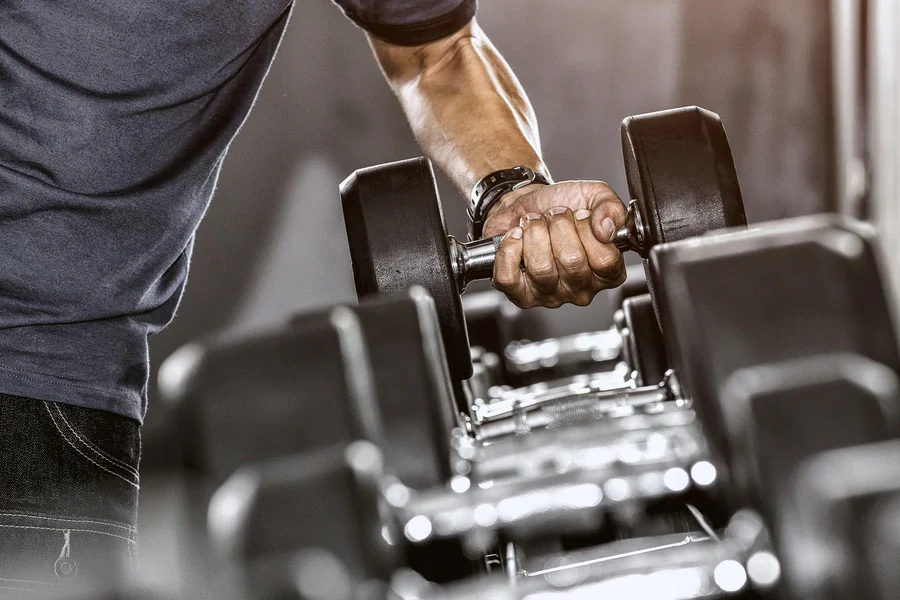Dumbbells are one of the most versatile pieces of equipment in any gym or home workout space. Whether you’re a beginner looking to tone up, an experienced lifter aiming to build muscle, or someone in between, dumbbells can help you achieve your fitness goals. In this comprehensive guide, we’ll delve into everything you need to know about dumbbell, including their benefits, types, exercises, and tips for incorporating them into your workouts.
Introduction to Dumbbells
Dumbbells are handheld weights that come in various shapes, sizes, and materials. They consist of a handle with weight plates attached at each end. Dumbbells are widely used in strength training, resistance training, and muscle-building exercises. They offer a range of benefits, including improved strength, muscle tone, and overall fitness.
Benefits of Dumbbell Training
Versatility
Dumbbells allow for a wide range of exercises targeting different muscle groups. From bicep curls and shoulder presses to lunges and squats, the possibilities are endless with dumbbells.
Convenience
Dumbbells are compact and portable, making them ideal for home workouts or when traveling. You can easily store them in a corner of your room or take them with you on the go.
Muscle Isolation
Dumbbells enable you to work on individual muscles or muscle groups without relying on machines. This helps improve muscle balance and coordination, leading to better overall strength and stability.
Progressive Overload
With dumbbells, you can easily adjust the weight to progressively challenge your muscles as they get stronger. This concept of progressive overload is essential for muscle growth and development.
Functional Strength
Many dumbbell exercises mimic real-life movements, such as lifting groceries or carrying bags. By incorporating dumbbell training into your routine, you can improve your functional strength and make everyday tasks easier.
Types of Dumbbells
Adjustable Dumbbells
Adjustable dumbbells allow you to change the weight by adding or removing weight plates from the handles. They are space-saving and cost-effective, as you only need one set of handles with multiple weight options.
Fixed-weight Dumbbells
Fixed-weight dumbbells have a specific weight that cannot be adjusted. They are available in various weights and are often used in commercial gyms or home workout spaces.
Hex Dumbbells
Hex dumbbells have a hexagonal shape, preventing them from rolling away when placed on the floor. They are commonly used for exercises like dumbbell rows, lunges, and chest presses.
Adjustable Selectorized Dumbbells
Selectorized dumbbells feature a dial or selector mechanism that allows you to adjust the weight quickly and easily. They are convenient for changing weights between sets without needing to manually add or remove weight plates.
Dumbbell Exercises
Dumbbell Bench Press
Lie on a flat bench with a dumbbell in each hand, arms extended above your chest.
Lower the dumbbells until your elbows are at a 90-degree angle.
Press the dumbbells back up to the starting position, squeezing your chest muscles.
Dumbbell Squat
Stand with your feet shoulder-width apart, holding a dumbbell in each hand at your sides.
Lower your body into a squat position, keeping your chest up and knees behind your toes.
Push through your heels to return to the starting position, engaging your glutes and quadriceps.
Dumbbell Shoulder Press
Sit or stand with a dumbbell in each hand, palms facing forward at shoulder height.
Press the dumbbells overhead until your arms are fully extended.
Lower the dumbbells back to shoulder height with control, keeping your core engaged.
Dumbbell Bicep Curl
Stand with a dumbbell in each hand, palms facing forward, arms extended at your sides.
Curl the dumbbells towards your shoulders, keeping your elbows close to your body.
Lower the dumbbells back down to the starting position, maintaining control throughout the movement.
Dumbbell Lunges
Stand with a dumbbell in each hand, arms at your sides.
Take a step forward with one foot and lower your body into a lunge position until both knees are bent at a 90-degree angle.
Push through your front heel to return to the starting position, then repeat on the other side.
Tips for Dumbbell Training
Start Light
If you’re new to dumbbell training, start with lighter weights to focus on proper form and technique. Gradually increase the weight as you build strength and confidence.
Focus on Control
Maintain control over the weight throughout each exercise to maximize muscle engagement and minimize the risk of injury. Avoid swinging or using momentum to lift the dumbbells.
Incorporate Variation
Include a variety of dumbbell exercises in your workouts to target different muscle groups and prevent plateaus. Mix up your routine regularly to keep your muscles guessing and continuously challenge them.
Listen to Your Body
Pay attention to how your body responds to each exercise and adjust accordingly. If something doesn’t feel right or causes discomfort, modify the movement or seek guidance from a fitness professional.
Prioritize Recovery
Give your muscles time to rest and recover between workouts to allow for optimal growth and repair. Aim for at least one full day of rest per week and prioritize proper nutrition and hydration.
Conclusion
Dumbbells are a versatile and effective tool for strength training, muscle building, and overall fitness. By incorporating dumbbell exercises into your workouts and following proper form and technique, you can achieve your fitness goals and improve your strength, stability, and overall health. Whether you’re a beginner or an experienced lifter, dumbbells offer endless possibilities for challenging and rewarding workouts. So grab a pair of dumbbells and start lifting your way to a stronger, fitter you!







